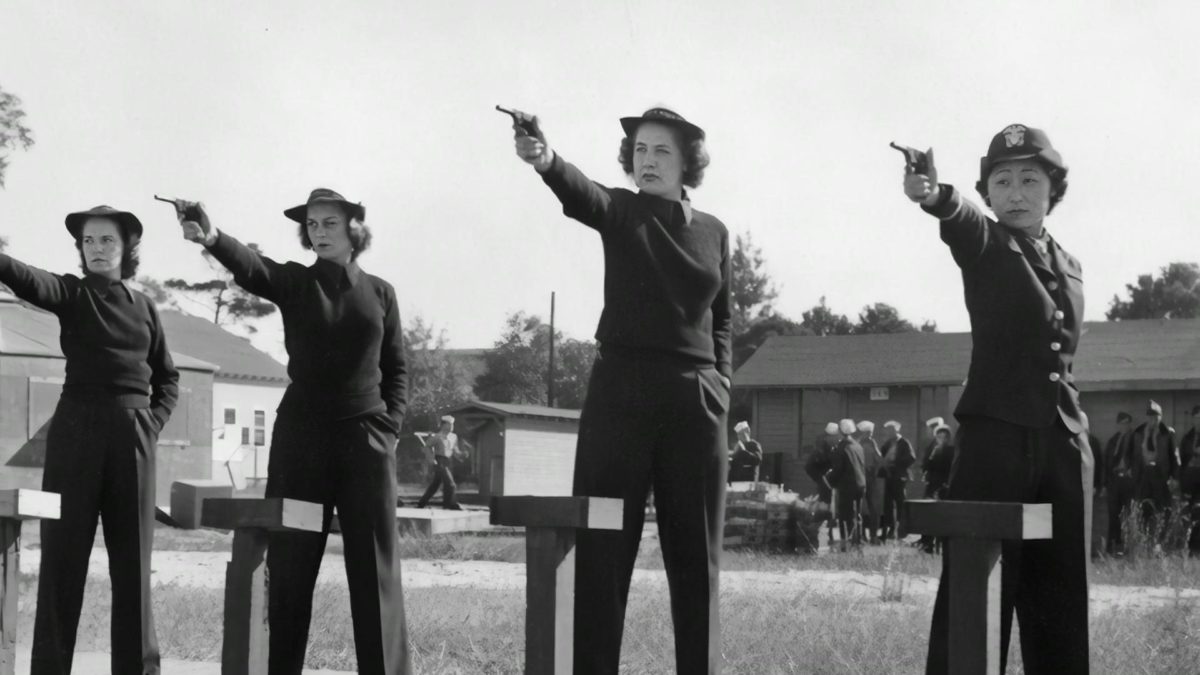Activity
Create an Abstract Dreamscape
In this activity, you will create an art piece inspired by the work of Bernice Bing.
Objective: To understand the contributions of Korean American soldiers during World War II.

Before World War II, tensions escalated between Japan and the United States during the 1930s. This hostility ultimately culminated in the Japanese attack on Pearl Harbor in 1941. A consequence of the attack was rising anti-Japanese sentiment and, later, the persecution of Japanese Americans with Executive Order 9066. The order imprisoned approximately 120,000 Japanese immigrants and Japanese Americans. While only Japanese immigrants and Japanese Americans were incarcerated, the anti-Japanese sentiment also extended to immigrants and Americans of other Asian descent groups, including Korean Americans.
Although Asian Americans faced intense discrimination in the United States, they served the nation at home and in the armed forces. Ernie Kim, for instance, was a parachute lieutenant in the U.S. Army and fought at the Battle of the Bulge during WWII. As the sole survivor of his unit, he was captured and imprisoned at the German POW camp in Heppenheim. In the POW camp, he received no medical care and very little food. When he was finally rescued, Kim weighed only 65 pounds and suffered from severe depression. The injustice of an individual soldier sacrificing his life for the nation while suffering discrimination at home needs to be furthered explored in Asian American history.
In this lesson, you will read passages from different secondary sources, conduct your own research, and write on the contextual themes and historical events that shaped the experiences of Korean Americans during WWII. This lesson is intended to be taught in tandem with a WWII curriculum.
Writing Standards for Literacy in History/Social Studies (Grade 9-12)
WHST 9-12.1: Write arguments focused on discipline-specific content.
WHST 9-12.4: Produce clear and coherent writing in which the development, organization, and style are appropriate to task, purpose, and audience.
WHST 9-12.5: Develop and strengthen writing as needed by planning, revising, editing, rewriting, or trying a new approach, focusing on addressing what is most significant for a specific purpose and audience.
WHST 9-12.7: Conduct short as well as more sustained research projects to answer a question (including a self-generated question) or solve a problem; narrow or broaden the inquiry when appropriate; synthesize multiple sources on the subject, demonstrating understanding of the subject under investigation.
History/Social Science (Grade 11)
HSS 11.7: Students analyze America’s participation in World War II.
HSS 11.7.3: Identify the roles and sacrifices of individual American soldiers, as well as the unique contributions of the special fighting forces (e.g., the Tuskegee Airmen, the442nd Regimental Combat team, the Navajo Code Talkers).
HSS 11.7.5: Discuss the constitutional issues and impact of events on the U.S. home front, including the internment of Japanese Americans (e.g., Fred Korematsu v. United States of America) and the restrictions on German and Italian resident aliens; the response of the administration to Hitler’s atrocities against Jews and other groups; the roles of women in military production; and the roles and growing political demands of African Americans.
Video, “For Susan Ahn, WWII Was a Fight for America and Korea”
Selected passages on Korean Americans during WWII (download PDF from sidebar above)
Internet and computer access
Possible Extension One
Ernie Kim was introduced to ceramics through a Veterans Administration class that provided occupational therapy after World War II. This experience helped Kim to find a new path in life: “I realized I could serve myself and the community by becoming a ceramic artist.” What role can art play in the reintegration of combat soldiers into civilian life? Research the topic of art therapy for veterans to understand how Kim benefited from such a program. You can start with the following sources:
American Art Therapy Association. n.d. “Art Therapy, Post-Traumatic Stress Disorder, and Veterans.” Americans for the Arts. https://www.americansforthearts.org/node/99938.
Veterans Families United. n.d. “Art Therapy: Visual, Performing, Written.” https://veteransfamiliesunited.org/art-therapy-visual-performing-written/.
Possible Extension Two
Korean Americans were not the only ones facing injustice. Many other minority groups served in the armed forces but continued to face discrimination at home during WWII, notably African Americans. Research the experiences at the U.S. home front of another minority group.
For more lessons based on Ernie Kim, visit the artist’s teacher packet.